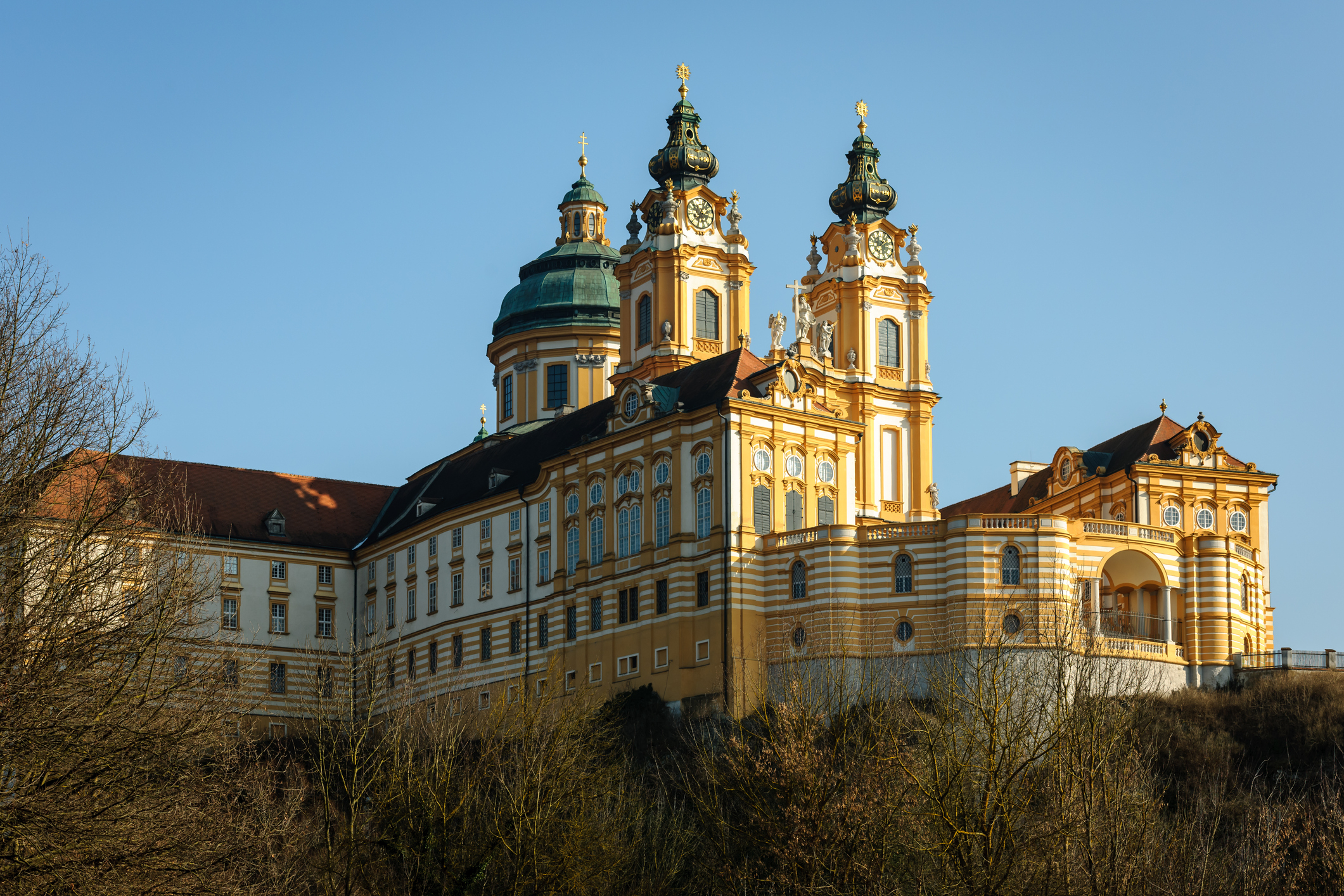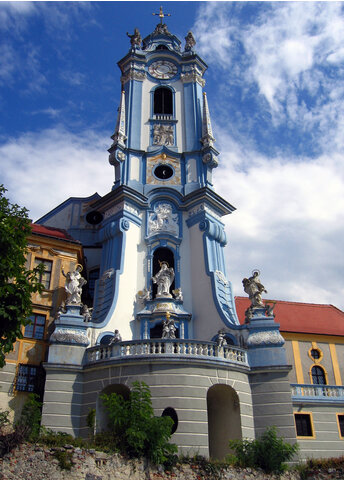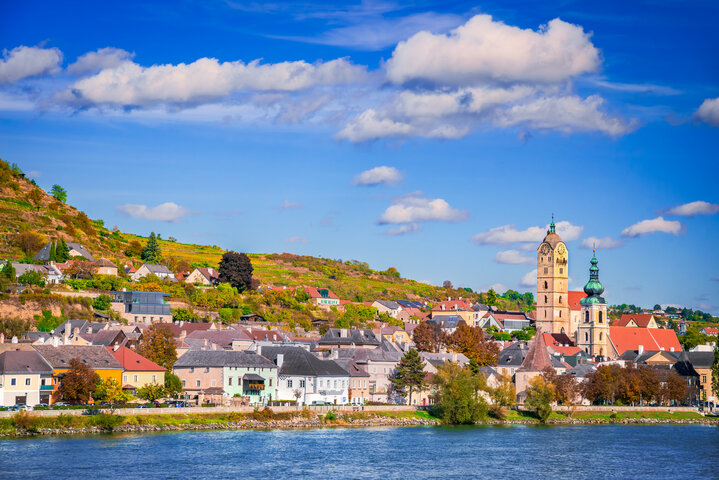Culture
Stift Melk – A Jewel of the Wachau
Stift Melk, a Benedictine abbey located on the right bank of the Danube River in the Wachau Valley, is one of the most impressive and significant Baroque buildings in Europe. Perched high above the town of Melk, this magnificent monastery draws thousands of visitors each year with its stunning architecture and rich history. It serves not only as a spiritual center but also as a cultural and tourist landmark.
History of Stift Melk
Stift Melk was founded in 1089 when Leopold II, Margrave of Austria, gifted the former Melk Castle to Benedictine monks. Over time, the abbey developed into a major religious, cultural, and educational hub. Since the Middle Ages, the monks of Stift Melk have played significant spiritual, cultural, and educational roles. A monastery school was established as early as the 12th century, and it remains in operation today.
In the 18th century, the abbey underwent a Baroque transformation that defines its current appearance. Under the guidance of architect Jakob Prandtauer, the abbey was extensively rebuilt between 1702 and 1736, becoming one of the most important examples of Austrian Baroque architecture. The resulting complex was designed not only for religious purposes but also to showcase the grandeur and influence of the Church.
Despite numerous historical challenges, including wars in the 19th and 20th centuries, Stift Melk continues to thrive as an active Benedictine abbey.
Architecture and Key Attractions
The architecture of Stift Melk is a masterpiece of Baroque design, combining religious symbolism with magnificent craftsmanship. The abbey is built on a rocky outcrop high above the Danube, offering breathtaking views of the Wachau Valley and the surrounding landscape.
1. The Abbey Church
At the heart of the abbey is the stunning Abbey Church, considered one of the finest Baroque churches in the world. The church’s interior is richly decorated with gold stucco, intricate frescoes, and ornate altars. Particularly noteworthy is the ceiling fresco by Johann Michael Rottmayr, which depicts the triumph of the Church and serves as a spiritual guide for worshippers.
The high altar, adorned with statues and embellishments, is another key feature of the church, and the grand Baroque organ adds to the church’s vibrant musical tradition, with regular concerts taking place.
2. The Marble Hall
One of the most famous attractions at Stift Melk is the Marble Hall, a stunning room known for its elaborate frescoes by artist Paul Troger and its marble columns. The Marble Hall is used for important events and was originally intended to host imperial guests. The hall’s grandeur is a testament to the abbey’s historical significance as both a spiritual and political center.
3. The Library
The Library at Stift Melk is one of the most impressive monastic libraries in Europe, housing an extraordinary collection of around 100,000 volumes, including many medieval manuscripts and rare early printed books (incunabula). The library’s architecture, featuring beautifully painted ceilings and finely crafted bookcases, reflects the Benedictine order’s emphasis on knowledge and education.
The Marble Library is especially famous for its magnificent design, with frescoes symbolizing the pursuit of wisdom and learning.
4. The Abbey Park
Surrounding the abbey is the tranquil Abbey Park, an ideal place for a peaceful stroll. The garden was created in the 18th century and features a blend of Baroque and English garden styles. The park is dotted with hidden corners, Baroque pavilions, and beautiful views of the abbey and the landscape.
A standout feature of the park is the Baroque Pavilion, decorated with frescoes by Johann Wenzel Bergl. It serves as a serene retreat for meditation and relaxation.
5. The Imperial Corridor and Imperial Rooms
Another highlight of the abbey is the Imperial Corridor and the Imperial Rooms. The 200-meter-long Imperial Corridor is adorned with portraits and historical paintings, leading to the opulent rooms that once accommodated imperial guests. These rooms, now part of guided tours, offer a glimpse into the abbey’s role in Austrian history and its connection to the Habsburg monarchy.
6. The Abbey Museum
The Abbey Museum provides a fascinating insight into the long and eventful history of Stift Melk. Located in the former imperial apartments, the museum showcases religious art, historical documents, and liturgical objects that illustrate the abbey’s spiritual and cultural significance. Particularly notable are the sacred relics and beautifully crafted liturgical vestments on display.
Significance of Stift Melk
Stift Melk holds immense historical, architectural, and spiritual significance. It remains an active Benedictine abbey, home to around 30 monks who continue the order’s spiritual and educational traditions. The Abbey School, one of Austria’s oldest educational institutions, has been in operation for centuries, providing education to generations of students.
In addition to its religious and educational roles, Stift Melk is a major tourist destination, drawing thousands of visitors from around the world each year. As part of the UNESCO World Heritage site Wachau, it is an essential stop for those exploring the region.
Conclusion
Stift Melk is a stunning example of Baroque splendor and a place of deep spiritual and cultural importance. Its impressive Abbey Church, Marble Hall, grand library, and scenic gardens offer visitors an unforgettable experience. Whether you are interested in history, art, or religion, a visit to Stift Melk is a journey into the past and present of this remarkable monastery.
With its role as both a religious center and a cultural landmark, Stift Melk continues to inspire awe and admiration, making it a must-see destination for anyone visiting the Wachau Valley or exploring Austria’s rich heritage.


